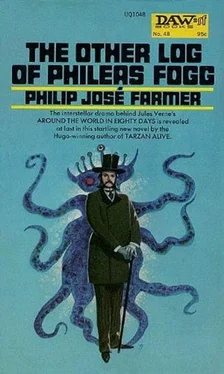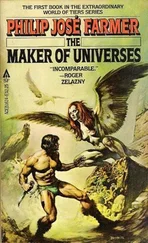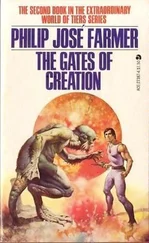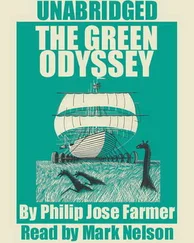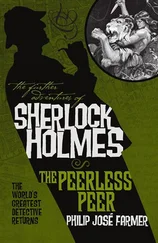Philip Farmer - The Other Log of Phileas Fogg
Здесь есть возможность читать онлайн «Philip Farmer - The Other Log of Phileas Fogg» весь текст электронной книги совершенно бесплатно (целиком полную версию без сокращений). В некоторых случаях можно слушать аудио, скачать через торрент в формате fb2 и присутствует краткое содержание. Жанр: Фантастика и фэнтези, на английском языке. Описание произведения, (предисловие) а так же отзывы посетителей доступны на портале библиотеки ЛибКат.
- Название:The Other Log of Phileas Fogg
- Автор:
- Жанр:
- Год:неизвестен
- ISBN:нет данных
- Рейтинг книги:3 / 5. Голосов: 1
-
Избранное:Добавить в избранное
- Отзывы:
-
Ваша оценка:
- 60
- 1
- 2
- 3
- 4
- 5
The Other Log of Phileas Fogg: краткое содержание, описание и аннотация
Предлагаем к чтению аннотацию, описание, краткое содержание или предисловие (зависит от того, что написал сам автор книги «The Other Log of Phileas Fogg»). Если вы не нашли необходимую информацию о книге — напишите в комментариях, мы постараемся отыскать её.
The Other Log of Phileas Fogg — читать онлайн бесплатно полную книгу (весь текст) целиком
Ниже представлен текст книги, разбитый по страницам. Система сохранения места последней прочитанной страницы, позволяет с удобством читать онлайн бесплатно книгу «The Other Log of Phileas Fogg», без необходимости каждый раз заново искать на чём Вы остановились. Поставьте закладку, и сможете в любой момент перейти на страницу, на которой закончили чтение.
Интервал:
Закладка:
“All unconscious, perhaps dead,” Fix said. “I called Moran in and hit him over the head with the butt of my gun. Then I went upstairs and hit Nemo when his back was turned. Osbaldistone was still senseless, so I only had to make Vandeleur stand with his face to the wall and then hit him, too.”
“And you did this for the reasons you stated?”
“Yes, but you’ll have to protect me and my family from now on. You will, won’t you?”
“Consider it done,” Mr. Fogg said.
With Fix ahead of them, for Fogg was not sure that it was not a trap, they went down to the landing. All three of the Capelleans were still unconscious.
“Are you going to kill them?” Fix said.
“Would you want me to do so, Mr. Fix?” Fogg said.
“No. I do not like them, and Nemo would have killed me without mercy,” Fix said. “But to slay them in cold blood…”
Fogg did not reply. He was searching Nemo’s clothing. Within a few seconds, he pulled a small flat leather case from a pocket and took out of it small oblong papers covered with writing and diagrams that could only be seen plainly under a magnifying glass. He said, “I was hoping he’d still be carrying these.”
“What are they?” Aouda said.
“The schematics for the distorter. But how did Nemo get them from Head’s body?”
“Head had them stored inside his glass eye,” Fix said. “Nemo removed it when he helped you throw Head’s body overboard.”
“I should have raised Head’s eyelids and looked at his eyes,” Fogg said. “But where did Head get the schematics?”
“It was an American Eridanean who found out how to manufacture distorters,” Fix said. “Head discovered that he had done so-how, I don’t know-and killed him, burned down his laboratory, and fled with the schematics and the distorter which the American had made. Your chief must have found out about this at once, which is why Head took passage on the Mary Celeste to avoid the Eridaneans looking for him on the liners.”
Fogg put the schematics in his pocket, looked at Passepartout’s watch, and said, “And those men outside?”
“They are either loungers or Eridaneans waiting to see if Nemo will surrender you to them.” He told Fogg about the telegram from the Eridanean chief.
Fogg looked at his watch again. “Let’s go,” he said.
“Where?” Aouda said.
“To the Reform Club. We have exactly ten minutes to get there if I am to win the bet.”
Verne says that Passepartout dragged Fogg outside by the collar, hailed a cab, and the two drove off at a reckless speed, running over two dogs and overturning five carriages. This is true, except for the dragging by the collar. But Aouda and Fix followed in another carriage at a somewhat slower pace. Aouda’s wound did not permit her to be jostled much, and, moreover, she stopped long enough to inform the gentlemen on the corner, who were indeed Eridaneans, that they were safe and that Fix was now one of them. She also told the gentlemen to pick up the Capelleans in Fogg’s house.
These hastened to do so, but, alas, they were too late to catch Vandeleur, Moran, and Nemo. These had recovered and fled, leaving Sir Hector behind. As the Eridaneans entered the front door, the trio went over the back wall of the garden.
Osbaldistone was carried out as if he were drunk and driven off in a cab. What happened to him thereafter, no one knows.
As everybody does know, Phileas appeared three seconds before his time was up. He collected twenty thousand pounds, though he had spent nineteen thousand during the journey, his last expenditure being a hundred pounds to the cabman who drove to the Reform. The remaining thousand pounds, he split between Fix and Passepartout. Within two days, Fogg and Aouda were married, and Verne ends his narrative on a happy note.
But what of the story behind Verne’s? The other log of Fogg ends on the day he took Aouda as his bride. No other literature on this subject has ever been turned up, so we must reconstruct the postlude. Fortunately, we have common sense and some narratives of a few other authors about some of the people Fogg met to help us build a reasonable sequel.
The Eridaneans and Capelleans, with Nemo out of the way, and through Fix’s offices, must have made a truce or perhaps even an alliance. Many on both sides felt, as Fix did, that there was no sense in continuing this secret and gory war which could end only in extermination for one side and near-extermination for the other. Besides, life as a mere Earthling was hard enough without adding to it the perils of Capelleanism and Eridaneanism.
Moran, we know from the writings of a certain Dr. John Watson, went back to India and stayed there for years. After retiring as a colonel, he rejoined his chief in London.
The chief, whom Watson called Professor James Moriarty, seems to have abstained from a criminal career for some years. Probably, the shock of being outwitted by Fogg and of losing the chieftainship of the Capelleans accelerated his illness. Nemo became a teacher for a while, but, after recovering much of his health, went back into business. He formed a vast criminal ring, though he succeeded in keeping his part in it unknown for a long time. Eventually, he experienced a bad fall-and falls-near the little Swiss village of Meiringen. It was symbolically and esthetically appropriate that a man who started his career in the water should end there.
Nemo’s brother, the colonel, had been so injured by the frenzied horse that he retired from the army. However, he did go back to his evil ways when older, though not as his brother’s partner. He appears briefly in a semifictional book by Robert Louis Stevenson, The New Arabian Nights.
Vandeleur plays a more important role in the same book.
Fogg retired to Fogg Shaw in rural Derbyshire, where he tinkered around in his laboratory and raised a number of children, all as handsome as he or as beautiful as their mother.
Fix continued to be a detective, though he now served only one master, or mistress in this case, Her Majesty.
Passepartout settled down as manager of Fogg’s estate and married a local girl.
And what of the Grand Plan?
From the situation of the world today, we may assume that it was abandoned.
What about the distorters?
Did the Eridaneans and Capelleans decide to throw the few remaining devices, along with the schematics, into the ocean? Or did some greedy person steal them? That we hear no more of the nine great clangings means nothing. It may be that someone, perhaps Fogg, invented a means for suppressing or canceling these noises. In which case, some of the many mysterious and seemingly impossible disappearances of things and people in this world may be explained.
Whatever happened to the distorters, the important thing is that Fogg and Aouda and Passepartout and Fix lived happily for many years. They may still be living for all anybody knows.
Fogg may even have thought that, after a hundred years, the public could be informed of the true story.
That Phileas Fogg’s initials and your editor’s are the same is, I assure you, only a coincidence.
ADDENDUM
The following article appeared in Leaves from The Copper Beeches , published for The Sons of the Copper Beeches Scion Society of the Baker Street Irregulars by the Livingston Publishing Co., Narberth, Pa., 1959.
A SUBMERSIBLE SUBTERFUGE OR PROOF IMPOSITIVE
BY H. W. STARR
A familiar literary phenomenon is the novel which is actually autobiography, biography, or factual narration disguised as fiction. We see it in the work of Thomas Wolfe, Dickens, Watson, and a score of other writers; and perhaps we may find it also in two novels that we have all read as children: Jules Verne’s Twenty Thousand Leagues under the Sea and The Mysterious Island. The popular impression of the most interesting character of this saga, an individual using the alias Captain Nemo, is that of an Indian prince, a disillusioned and embittered idealist, sickened by civilization, who gathered a little band of kindred spirits, devoted to him and tenderly cared for by him, and vanished forever into the depths of the sea in a marvellous submarine which he had secretly assembled. Yet if we examine these tales we find certain inexplicable and absolutely irreconcilable inconsistencies appearing in them-for example the dates. According to Twenty Thousand Leagues, the Nautilus is recorded as first being observed by seafarers in 1866 and vanishing in the Maelstrom in 1868, at which time Professor Aronnax and his companions escaped from the vessel. Yet we are surprised at the beginning of The Mysterious Island, when Captain Nemo is a silvery-haired old ruin, the last survivor of a company of at least twenty-four sailors and two officers, living in solitude on Lincoln Island, that the date is given as 1865!
Читать дальшеИнтервал:
Закладка:
Похожие книги на «The Other Log of Phileas Fogg»
Представляем Вашему вниманию похожие книги на «The Other Log of Phileas Fogg» списком для выбора. Мы отобрали схожую по названию и смыслу литературу в надежде предоставить читателям больше вариантов отыскать новые, интересные, ещё непрочитанные произведения.
Обсуждение, отзывы о книге «The Other Log of Phileas Fogg» и просто собственные мнения читателей. Оставьте ваши комментарии, напишите, что Вы думаете о произведении, его смысле или главных героях. Укажите что конкретно понравилось, а что нет, и почему Вы так считаете.
